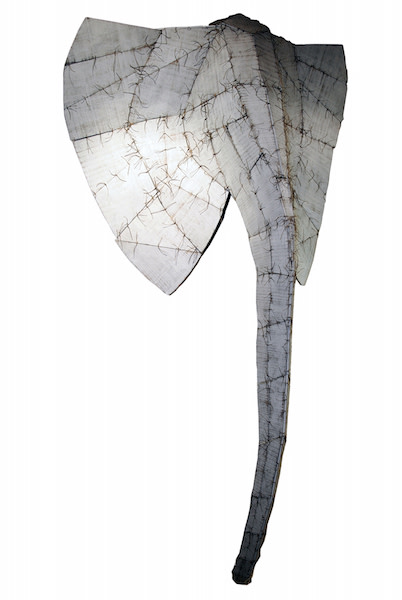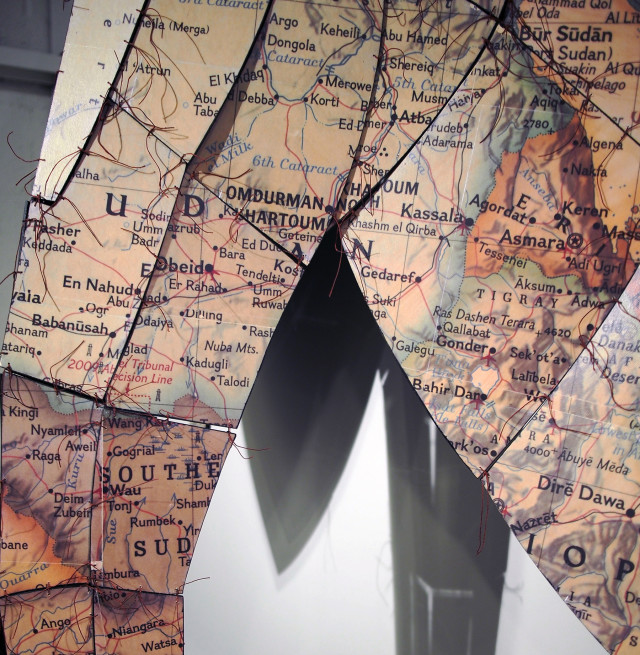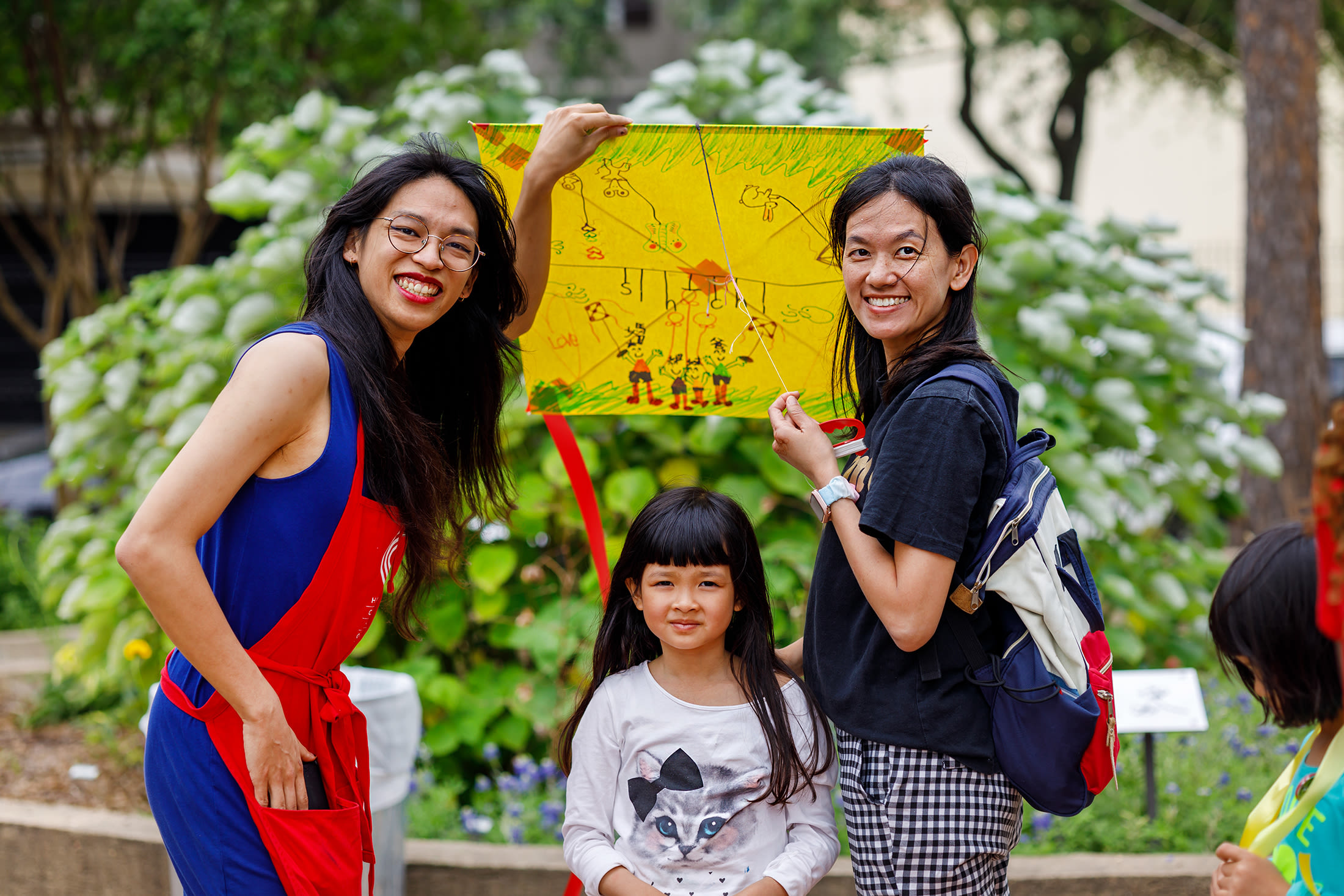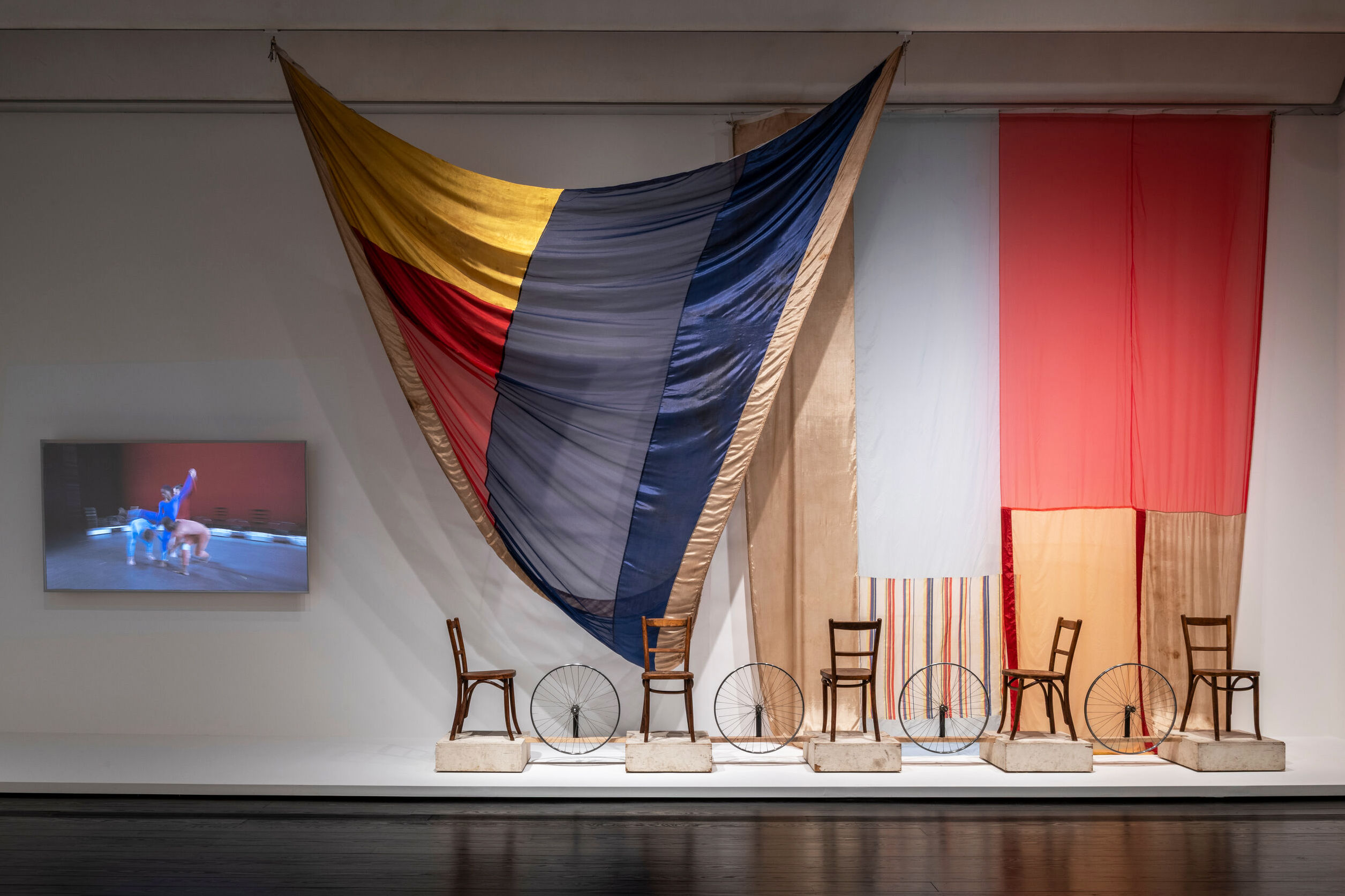Out of Africa

Image: Wendy Maruyama
Africa’s elephant population has been all but decimated by illegal ivory poaching. A population that once numbered over a million has been sliced in half. Craft artist and educator Wendy Maruyama hopes to provide awareness and end poaching with her exhibit The wildLIFE Project, which debuts at the Houston Center for Contemporary Craft on Friday, September 18.
The exhibit features six life-size elephant heads made of wood. Curator and frequent collaborator Elizabeth Kozlowski likens the pieces to piecework quilts. “She has created these really beautiful and monumental forms,” she notes. Each head is composed of multiple components. Some of the heads are painted while others are stained or have maps of Africa covering their surface.
The exhibit also features The Bell Shrine, a Buddhist shrine dedicated to elephants who have lost their lives to poaching. The shrine (or Butsudan) features a cast bronze bell that rings every 15 minutes—the frequency by which an elephant is killed each day. The Bell Shrine also refers to one of the larger uses of the illegally obtained ivory—carved objects of worship and religious imagery.
Kozlowski considers Maruyama’s work on The wildLIFE Project a success—for several reasons. Whereas traditional craft tends to prize skill, technique, and beauty over social awareness, Maruyama’s craft demonstrates that craft can multi-task. Plus, The wildLife Project is as contemporary as it is classic. Maruyama crafted The Bell Shrine using traditional woods and joinery technique. But her cabinet making incorporates video projection. “Wendy has successfully created a body of work that will draw a different audience in and make people aware, if they’re not already, about what’s happening with the elephants and rhinoceroses [of Africa] and, hopefully, make them think about their choices,” adds Kozlowski.

Image: Wendy Maruyama
This is why she has followed Maruyama’s work for years and jumped at the chance to collaborate with the respected educator and craftsperson again. Curator and artist worked together on The Tag Project, a segment of the tryptic installation exhibit Executive Order 9066. E.O. 9066, wherein the artist meditates on the aftermath of President Franklin D. Roosevelt's 1942 executive order that resulted in the forced relocation and detainment of approximately 120,000 US residents and citizens of Japanese ancestry.
For The Tag Project, hundreds of volunteers helped Maruyama recreate the 120,000 ID tags—one for each detainee. This influenced her approach to The wildLIFE Project. “I really wanted to use my work as a tool, so to speak, as a way to get the message out there,” says the artist. Like she did with E.O. 9066, the artist plans to educate and engage viewers with wildLIFE.
“It just boggles my mind that such a large and majestic and intelligent land animal species can be decimated for ivory trinkets. People just make me sick.”
It is a strongly worded response from the artist but, given the evidence, it’s a fair point. Maruyama’s research into elephant poaching gave her access to the growing list of animals endangered by human actions. “I became aware of lesser known species that are also teetering on the brink of extinction, such as the Pangolin, a curious, sweet looking animal that is related to the anteater.” The artist adds to the list of animal populations that humankind has put at risk—seals, dolphins, and whales or bobcats and mountain lions.
“We’ve [Kozlowski and Maruyama] tried to provide a more coherent explanation of what is going on with wildlife, using the elephant as a point of departure, with hopes that people will be interested enough to keep searching.”
Opening reception Friday, Sep. 18 at 5. On view thru January 3. Tue–Sat. 10 a.m. – 5 p.m. Free. 4848 Main St. 713-529-4848. crafthouston.org




